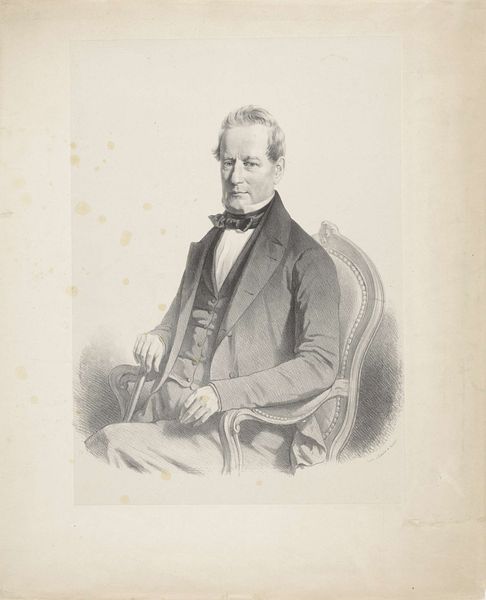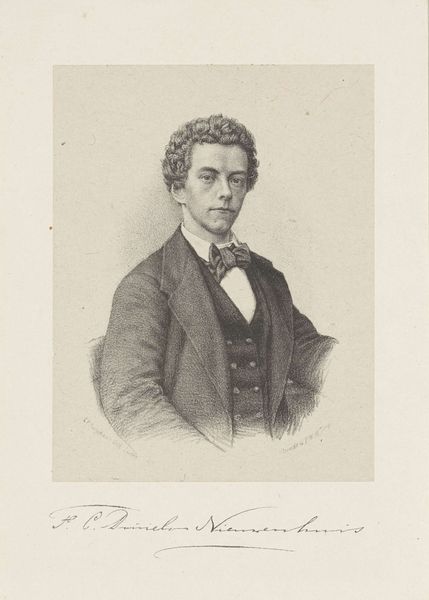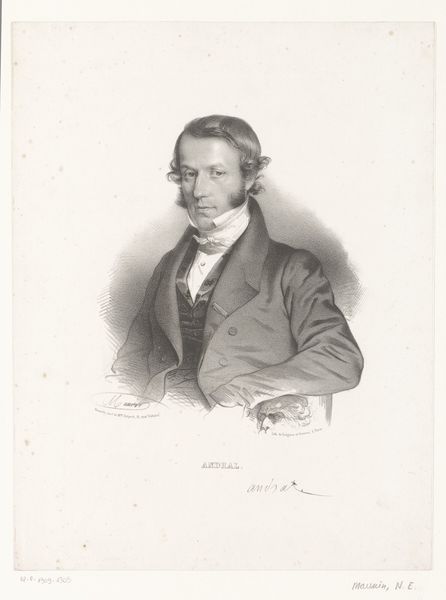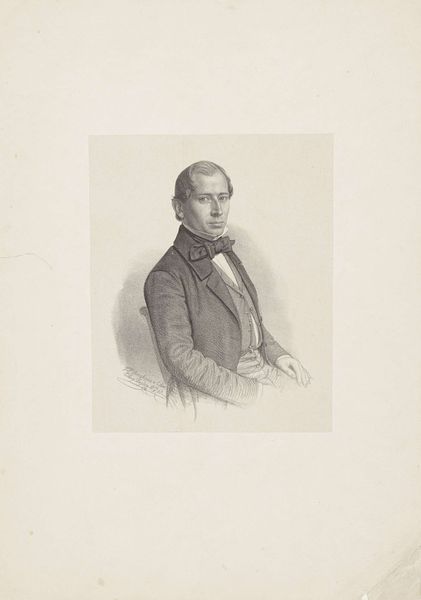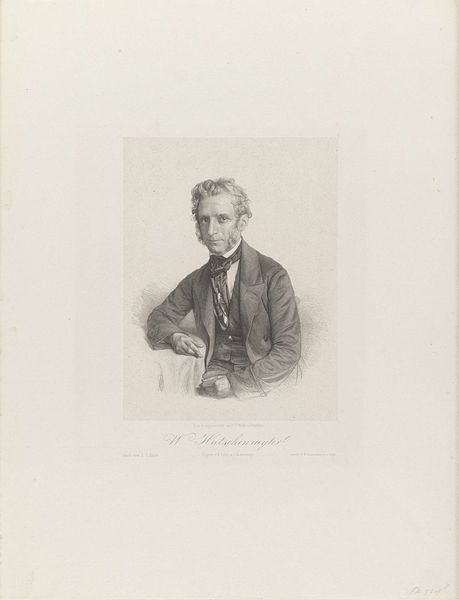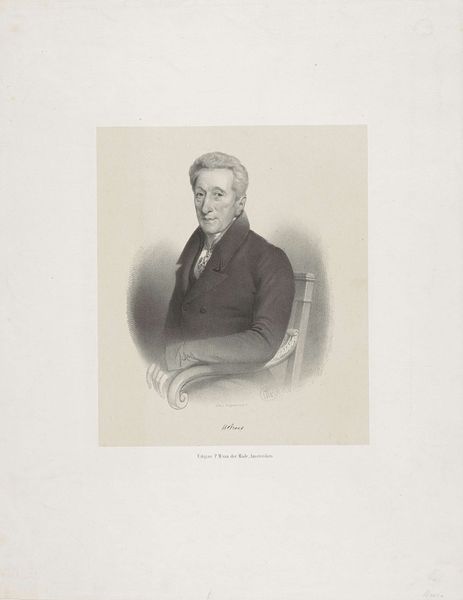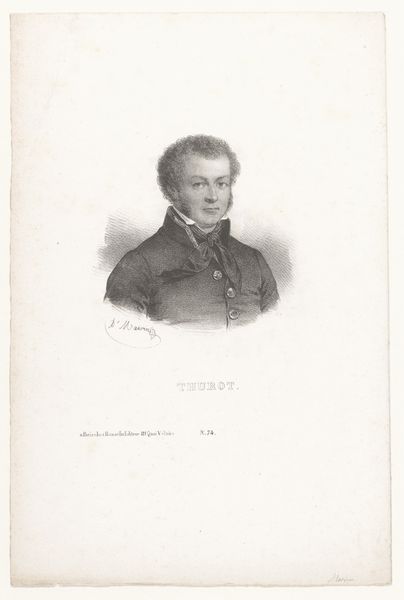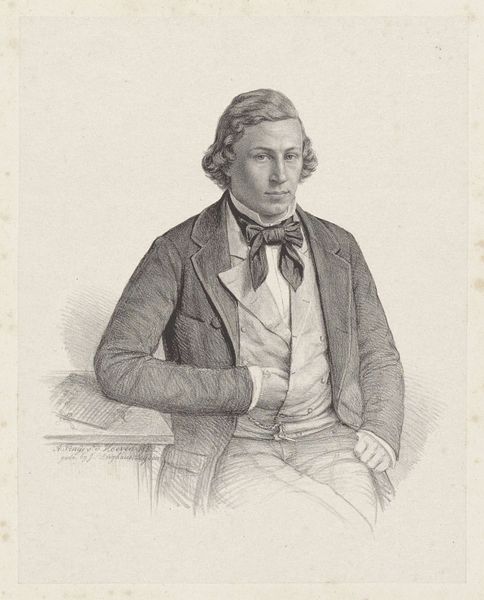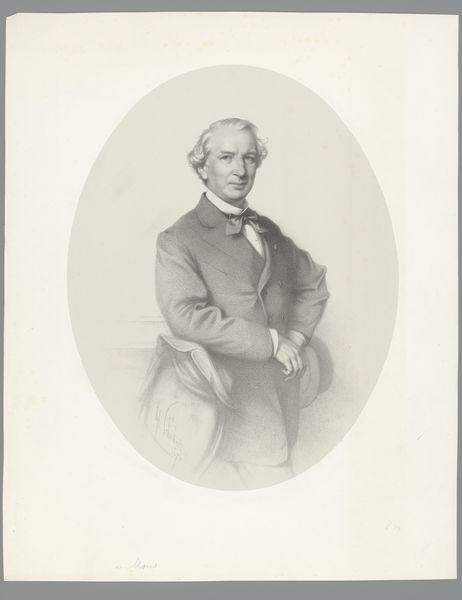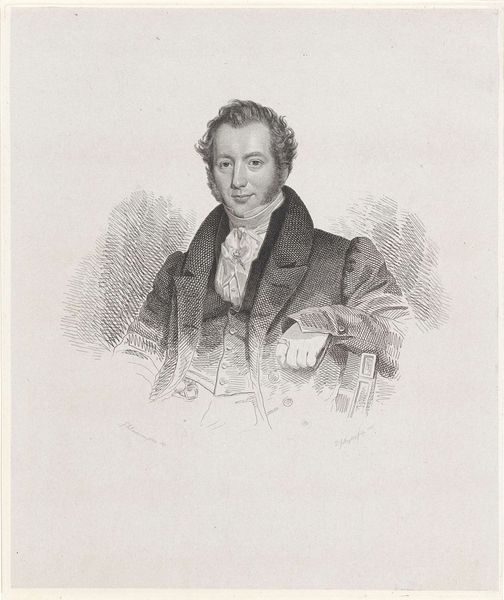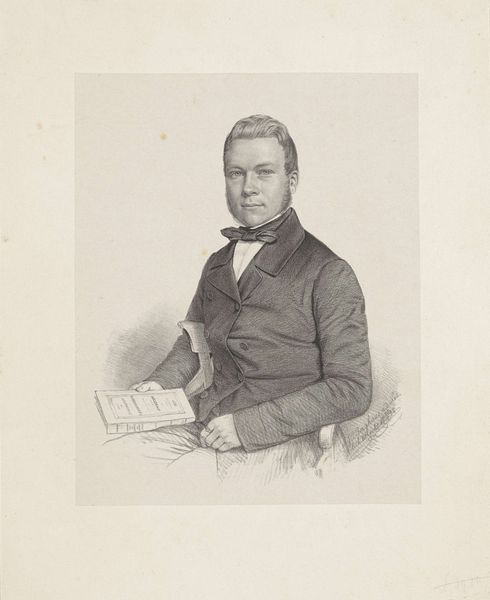
Portret van Cornelis Johan de Lange van Wijngaarden 1829 - 1863
0:00
0:00
drawing, pencil, graphite
#
portrait
#
pencil drawn
#
drawing
#
light pencil work
#
photo restoration
#
pencil sketch
#
charcoal drawing
#
figuration
#
pencil drawing
#
romanticism
#
pencil
#
graphite
#
pencil work
#
academic-art
Dimensions: height 565 mm, width 428 mm
Copyright: Rijks Museum: Open Domain
This portrait of Cornelis Johan de Lange van Wijngaarden was drawn by Adrianus Johannes Ehnle using graphite on paper. Graphite pencils may seem commonplace now, but their development in the 19th century was key for artists looking for precision and detail. Consider the marks that Ehnle made. See the fine, controlled lines creating the man’s features, his clothes, and the chair. Graphite allowed the artist to build up tone gradually, achieving a subtle likeness. But it also reflects the sitter’s social position. His dark suit, crisp white shirt, and the very fact of his portrait signals a certain degree of affluence, labor, and class. There is the labor involved in the physical act of drawing, but also the labor that afforded the sitter to pose for the portrait. Graphite, as a medium, democratized image-making, but even so, it was still deployed to reflect social hierarchies. The drawing asks us to consider the relationship between material, making, and social status.
Comments
No comments
Be the first to comment and join the conversation on the ultimate creative platform.
